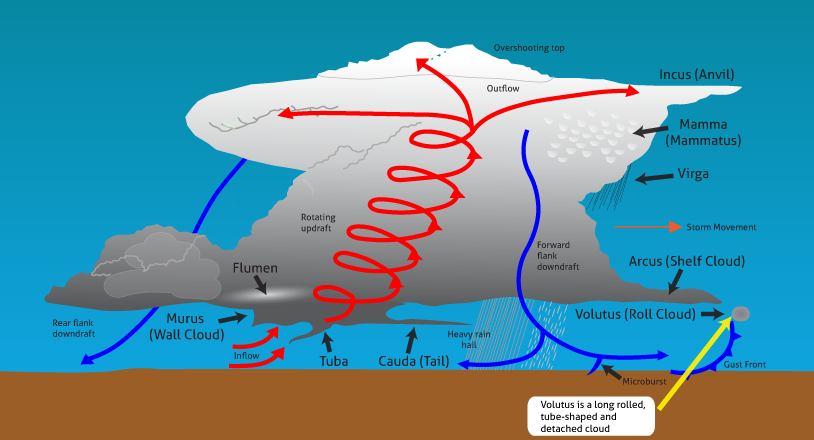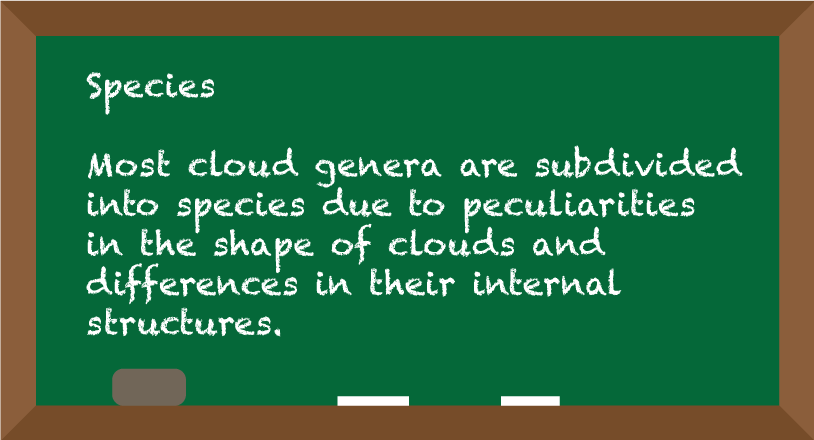Cloud Species
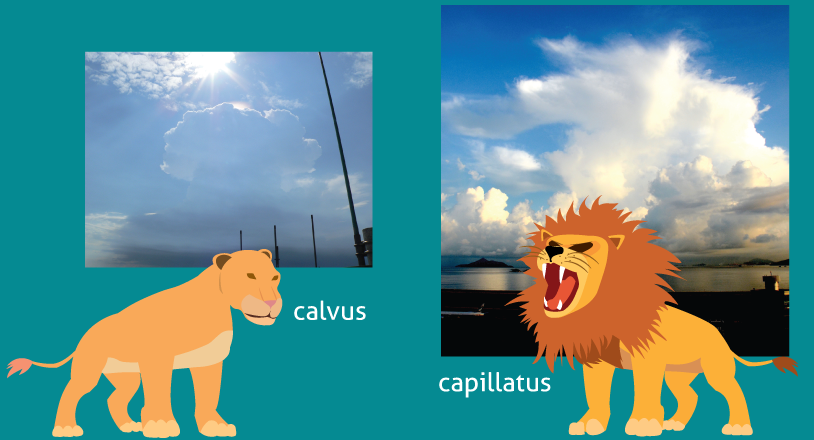
Calvus is a cumulonimbus cloud developed from congestus in which some of the protuberances of the upper part are beginning to lose their cumuliform outlines but no cirriform parts can yet be distinguished.

Capillatus clouds are cumulonimbus characterised by the presence of distinct cirriform parts of fibrous or striated structure mostly in its upper portion, frequently having the form of an anvil, a plume or a vast, more or less disorderly, mass of hair. It is usually accompanied by showers or thunderstorms, often brings squalls and occasionally hails.
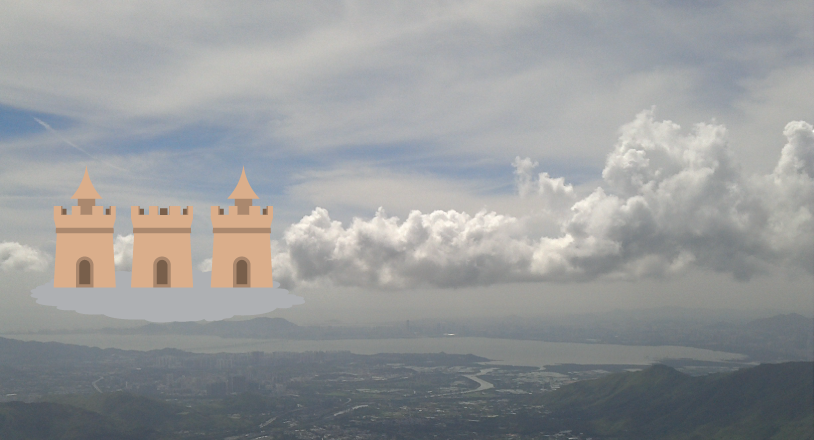
Castellanus has cumuliform protuberances in the form of turrets giving it a crenellated appearance in some portion of its upper part. The turrets, some of which have greater height than width, may be connected by a common base. These features of castellanus are especially evident when they are seen from a distance. They appear in stratocumulus, altocumulus, cirrus or cirrocumulus.
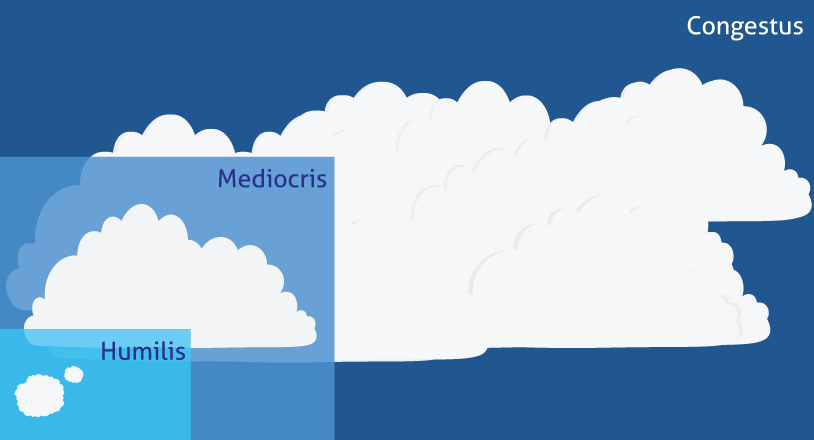
Congestus is a cumulus cloud of great vertical extent with marked sprouting and its bulging upper part resembles a cauliflower. It may produce abundant precipitation.

Fibratus looks like detached or a thin cloud veil. It consists of nearly straight or irregular curved filaments which do not terminate in hooks or tufts. It usually appears in cirrus or cirrostratus.

Floccus is a species in which each cloud unit is a small tuft with a cumuliform appearance, the lower part of which is more or less ragged and often accompanied by virga. It appears in stratocumulus, altocumulus, cirrus or cirrocumulus.


Humilis is a cumulus cloud of only a slight vertical extent. It generally appears flattened.
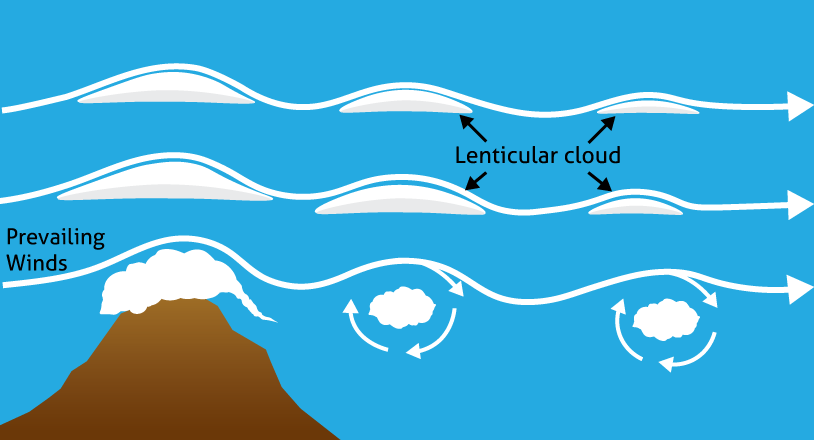
Lenticularis has the shape of an elongated lens or almond, usually with well-defined outlines. It occasionally shows irisation (iridescence). It is formed generally by orographic uplifting, but may also occur in regions without significant undulating terrain. It mainly goes with stratocumulus, altocumulus or cirrocumulus.
When a layer of relatively stable and moist airstream is forced to rise up the hills, causing undulating wave motions. The rising air in the wave causes the moist air to cool down and condense into visible water droplets. Lenticular clouds then form. As lenticular cloud looks like one or several convex lens, it is sometimes mistaken as a flying saucer or UFO, and therefore also commonly known as "flying saucer cloud".

Mediocris is a cumulus cloud of moderate vertical extent, the top of which shows fairly small protuberances.
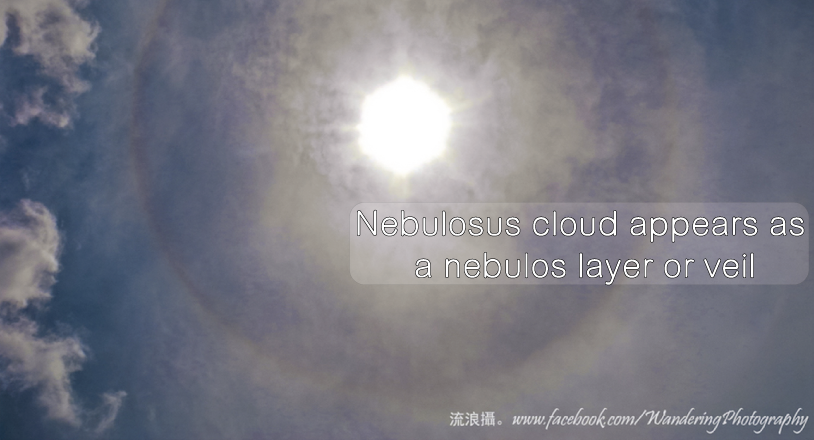
Nebulosus appears as a dim veil and has no distinct detailed features. It appears mainly in stratus and cirrostratus.
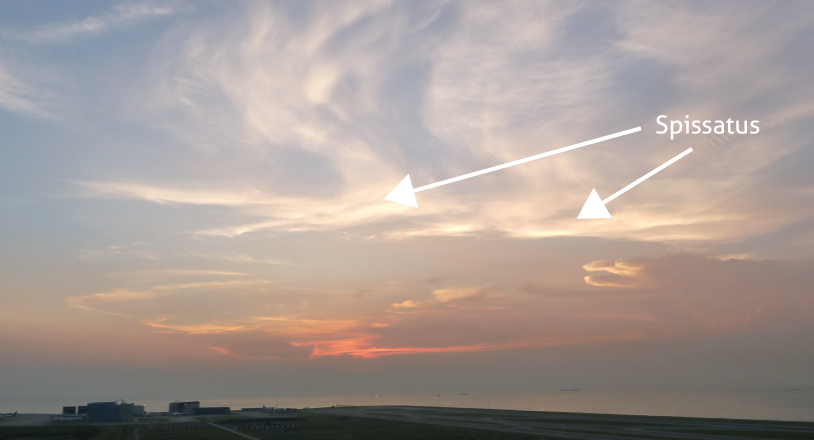
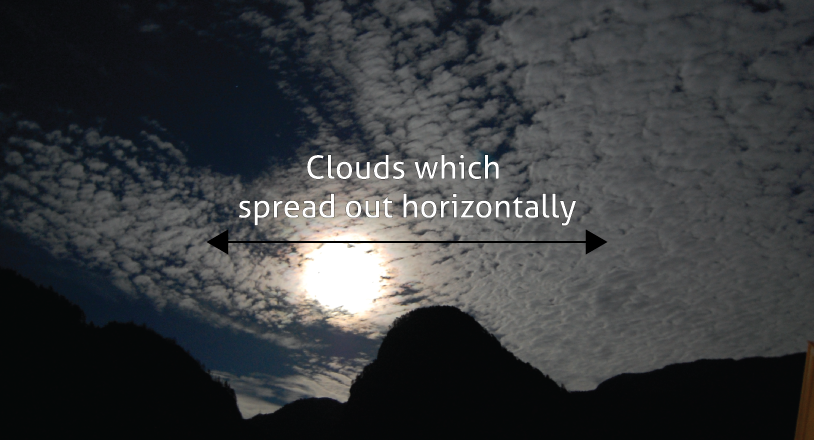
Stratiformis spreads out in an extensive horizontal sheet or layer. It occurs in stratocumulus, altocumulus, and occasionally, cirrocumulus.

Uncinus is shaped like a comma, terminating at the top in a hook, or in a tuft whose upper part is not in the form of a rounded protuberance. It only appears in cirrus.
